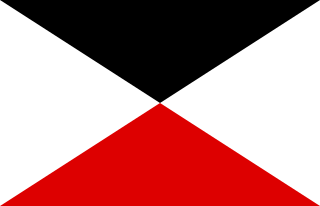
The Guards Corps/GK was a corps level command of the Prussian and then the Imperial German Armies from the 19th century to World War I.

The IV Army Corps / IV AK was a corps level command of the Prussian and then the Imperial German Armies from the 19th Century to World War I.

The Guards Cavalry Division (Garde-Kavallerie-Division) was a unit of the Prussian Army that was stationed in Berlin. The division was a part of the Guards Corps (Gardekorps).

The XII Army Corps / XII AK was a Saxon corps level command of the Saxon and German Armies before and during World War I.

The I Royal Bavarian Army Corps / I Bavarian AK was a corps level command of the Royal Bavarian Army, part of the Imperial German Army, before and during World War I.

The I Army Corps / I AK was a corps level command of the Prussian and then the Imperial German Armies from the 19th Century to World War I.

The 2nd Cavalry Division was a unit of the German Army in World War I. The division was formed on the mobilization of the German Army in August 1914. The division was disbanded in 1919 during the demobilization of the German Army after World War I.

The 7th Cavalry Division was a unit of the German Army in World War I. The division was formed on the mobilization of the German Army in August 1914. The division was disbanded in 1919 during the demobilization of the German Army after World War I.

The 6th Cavalry Division was a unit of the German Army that fought on Eastern and Western Fronts during World War I. The division was formed on the mobilization of the German Army in August 1914 and was disbanded in 1919 during the demobilization of the German Army after World War I.

The 4th Cavalry Division was a unit of the German Army in World War I. The division was formed on the mobilization of the German Army in August 1914. The division was disbanded in 1919 during the demobilization of the German Army after World War I.
The history of the German Cavalry in World War I is one of an arm in decline.

The VII Reserve Corps was a corps level command of the German Army in World War I.

The V Reserve Corps was a corps level command of the German Army in World War I.

The VI Reserve Corps was a corps level command of the German Army in World War I.

The I Royal Bavarian Reserve Corps / I Bavarian RK was a corps level command of the Royal Bavarian Army, part of the Imperial German Army, in World War I.

The XIV Reserve Corps was a corps level command of the German Army in World War I.

The III Royal Bavarian Army Corps / III Bavarian AK was a corps level command of the Royal Bavarian Army, part of the Imperial German Army, before and during World War I.

The II Royal Bavarian Army Corps / II Bavarian AK was a corps level command of the Royal Bavarian Army, part of the Imperial German Army, before and during World War I.

The VIII Army Corps / VIII AK was a corps level command of the Prussian and then the Imperial German Armies from the 19th Century to World War I.

The VII Army Corps / VII AK was a corps level command of the Prussian and then the Imperial German Armies from the 19th Century to World War I.


